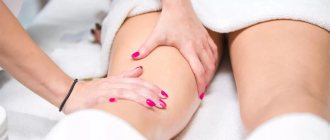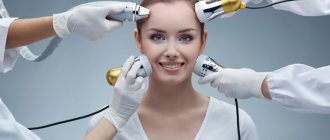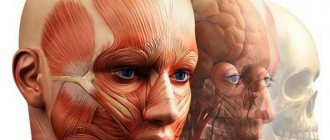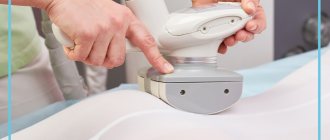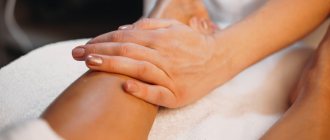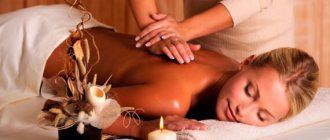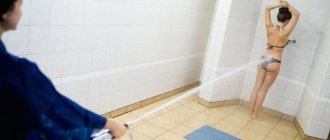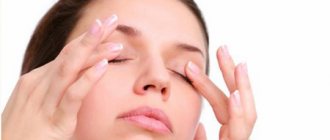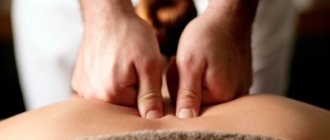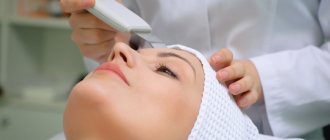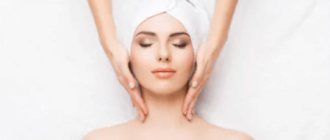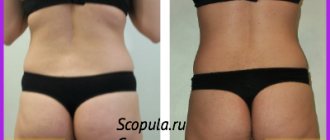Stress, overwork, physical and mental stress - constant companions of a person - often cause health problems. According to statistics, 80% of the world's population develop areas of excessive muscle tension in the body, which lead to a number of problems. Spasms are accompanied by severe pain, disruption of blood flow and metabolic processes in tissues, and limitation of motor functions. Fortunately, there is a good way to achieve complete relaxation of the fibers and eliminate painful symptoms.
This is myofascial massage - the latest therapeutic technique that came from America not long ago and has already become popular all over the world. Let's get to know her better.
Fascia and its functions
The word fascia is translated from Latin as “bandage”, “bandage” or “case”. In anatomy, fascia is a dense connective tissue that literally permeates the body, creating a sheath for muscles, enveloping internal organs, bones and nerve fibers. This is an important element of the structure of tendons, ligaments, and joints.
Considered an auxiliary tissue, fascia nevertheless performs important functions:
- Keeps internal structures, muscles, tendons, blood vessels and nerves in a clearly fixed position.
- Actively participate in metabolism.
- Separate organs from each other, limiting anatomical structures.
- Attach muscles to the bones of the skeleton.
- They control muscle volume and prevent their deformation due to their elasticity and stretchability.
- By contracting, they allow you to hold the body in an awkward position.
- They transmit energy impulses, moving muscles and bones.
- Accelerate the flow of blood and lymphatic fluid.
- They protect blood vessels and nerves passing through the thickness of muscle tissue.
Fascia has memory and is able to change its shape with constant repetition of the same movements.
It has been proven that the elasticity of fascial tissues largely depends on the emotional state of a person: internal clamps, stress and tension make these structures rigid, reduce their flexibility, which leads to poor posture and stiffness of movements.
Consequences of dysfunction
For various reasons, the structure and functions of the fascia can be disrupted, causing a lot of problems for a person.
- Excessive physical activity often causes muscle spasms, causing the fascia to become damaged or hardened, creating tense, painful areas.
Relieving pain in the legs: calf massage - Active muscle contraction increases the load on the connective tissue structure: the fibers are deformed (shortened or stretched), changing the position of the internal organs, disrupting their normal functioning, limiting mobility.
- Prolonged muscle spasms often cause the development of inflammation and degenerative changes in the structure of fascial fibers. And these processes are almost always accompanied by increasing pain.
- Dehydration or damage to tissue cells often causes changes in the shape and internal structure of the fascia, disrupting their conductivity. As a result, metabolic processes are inhibited: tissues do not receive enough oxygen and nutrients, which leads to rapid aging of the body.
Fascial tissue is often called the “sixth sense organ.” After all, free nerve endings, receptors responsible for pain and movement “sensors” are located here. Any disruption of the functioning of the “peripheral brain” can lead to sad results: we will stop coordinating any movement of the body in space and feel pain, which, as is known, is a signal warning of problems with the body.
One way to relieve back pain is to massage your lower back.
The principle of action and results of massage
It is known that fascial tissue is very sensitive and is capable of changing its structure in response to external influences. Therefore, special techniques of deep myofascial massage, during which not the muscles themselves are worked, but the connective tissue membrane surrounding them, will help restore lost functions and relieve a person from pain and discomfort. As a result of this procedure:
- Blood flow increases, improving tissue nutrition and preventing oxygen starvation.
- The movement of lymph is activated, which removes toxins, poisons, waste products, and decay products from the body.
- Spasms and tension that impede normal muscle movement are eliminated.
- Muscle fibers gain strength and elasticity and quickly restore their performance.
- Trigger points are developed and the reflex organs are affected.
- The compressed fascial fibers are straightened, returning the internal structures of the body to their normal position, significantly improving a person’s posture.
The result of massage and physical exercises: before and after - The sensitive conductivity of the fascial chains is normalized, as a result of which precise commands are sent from the brain to the internal organs, clearly regulating the functioning of the latter.
The technique of working with fascia allows you to increase the mobility of the spine and joints, corrects the figure, promoting weight loss, relieves inflammatory processes, improves the appearance and condition of the skin. Moreover, this massage directly affects the nervous system, balancing the processes of excitation and inhibition, improving sleep, and improving mood.
It is important to warn the patient that a temporary reaction to exposure may include local redness of the skin, muscle twitching, chills, nausea and increased urination. This is how the body rebuilds itself and reacts to changes caused by the massage therapist’s manipulations.
The effectiveness of massage techniques
The most pronounced effect from manual intervention can be obtained by completing a full course, the duration of which is determined by the doctor individually. The effectiveness of the procedure cannot be ignored:
- deep cleansing of the skin occurs, blackheads, comedones, and sebaceous plugs are removed;
- healthy tone is restored;
- microrelief is leveled;
- pores are narrowed, the activity of the sebaceous glands is normalized;
- wrinkles and folds are smoothed out;
- scars and cicatrices become less noticeable;
- blood circulation and lymph flow improves;
- swelling, bags and dark circles under the eyes disappear;
- a reliable frame is formed that supports the oval of the face in a natural position;
- the face looks younger, refreshed, rested.
Fascial massage of different zones
Long-term scientific research has proven that by acting on different areas of fascial tissue, it is possible to eliminate clamps, relieve spasm or muscle tension, relieve pain, even working at some distance from its source, restore or limit the mobility of various structures.
Indications and contraindications for head massage
Since fascial tissue literally permeates our entire body, different areas of it are subject to massage:
Back
The impact on this zone is exclusively health-improving in nature and is carried out in order to:
- develop painful trigger points;
- increase spine mobility;
- eliminate muscle spasms;
- release pinched nerve endings;
- improve blood circulation;
- relieve pain syndrome.
The patient is placed on his stomach to perform myofascial diagnosis. It allows you to determine the state of a person’s musculoskeletal system, the range of motion of the spine and joints, and identify existing and sometimes hidden diseases. Using examination and deep palpation, the massage therapist determines tension zones and trigger points, thus outlining an individual plan of action.
A session of myofascial massage begins with the cervical-collar area, then moves to the shoulders, goes down along the paravertebral lines and ends with working on the lower back and sacral part of the back. At the same time, classical techniques - stroking, rubbing, kneading - are combined with the myofascial technique of the “three Ts”: “tension” (pressure), “torsion” (twisting), “traction” (stretching). The treatment is carried out along the fibers, matching the deep impact with the patient’s breathing.
Legs
The legs and thighs are massaged to relieve tension, muscle pain, and increase endurance. The procedure is often used by athletes who experience physical strain on a daily basis.
Here, the stretching technique is most often used, which allows you to relax the fascia, restore their elasticity, and thoroughly work out the muscles. Massage slowly, in the direction of the fibers. With one hand they lightly fix the skin, with the other they move the fascia until a strong resistance is felt. Repeat the procedure until complete tissue relaxation occurs.
The so-called “felting” will help to stretch the compacted fibers of the fascia: the muscles are grabbed, lifted, pulled to the side, and then returned to their original position.
Face and neck
Myofascial work on the neck is primarily aimed at relieving pain that periodically occurs even in a completely healthy person. The method allows you to eliminate problems such as:
- spasms;
- pinched nerve roots;
- short neck syndrome;
- "widow's hump";
- subsidence of the vertebrae;
- ligament weakness;
- swelling;
- age-related degenerative changes.
Massage begins with diagnostics, determining the anatomical features of the muscle structure and tissue attachment points. Then they begin therapy aimed at removing the blocks. The fascia of the lateral surface of the neck is treated simultaneously with the impact on the scalp. Kneading and pressing are carried out with both hands at once.
Myofascial facial massage is used to remove puffiness, improve the color and condition of the skin, tighten the oval, and stop age-related changes. In addition, it helps in restoring facial symmetry after strokes and paresis.
Myofascial work-out involves a deep impact on the structures of the body, so you should get used to the procedure gradually, step by step increasing the duration - from 30 minutes to an hour and a half. To achieve lasting results, it is recommended to visit the massage room 2-3 times a week.
Indications for trigger point massage
Myofascial massage is effective against acute and chronic myofascial pain syndromes. Not only does it relieve muscle tension and pain, but it also helps athletes cope better with physical activity and prevent injury. However, the procedure is indicated not only for actively training people. It is useful for office workers who lead a sedentary lifestyle, as well as for patients who are overweight or underweight.
Treatment of the cervical-collar area is indicated in the following cases:
- pinched nerves or blood vessels;
- dizziness, headache;
- congestion or noise in the ears;
- decreased muscle tone;
- short neck syndrome;
- ligament weakness;
- osteochondrosis and its complications;
- "Widow's hump"
With the help of a massage of the neck and upper back, it is possible to get rid of vegetative manifestations caused by muscle tension and pain.
In addition to pain, indications for massage of the thoracic and lumbar regions may include scoliosis, osteochondrosis, numbness of certain areas of the body, and age-related degenerative changes.
Contraindications
Myofascial therapy can cause global changes in the body, so it needs to be taken seriously. You should avoid the procedure if you suffer from:
- oncology;
- tuberculosis;
- herpes;
- internal bleeding;
- dermatitis;
- pustular rashes;
- fragility of blood vessels;
- osteoporosis;
- blood diseases;
- rosacea.
Open injuries, wounds, burns, the presence of large moles, papillomas, nevi are also contraindications to deep tissue massage. Infectious and inflammatory diseases accompanied by high body temperature, pregnancy, recent childbirth or abortion, increased mental excitability - conditions in which exposure to the fascia can cause harm to a person.
Self-massage
Doctors unanimously say that this massage should only be performed by specialists. After all, without deep knowledge of anatomy and physiology, the ability to “read” and feel the human body with your hands, without practical skills in influencing fascial tissue, you can only harm the patient, aggravating his condition.
The only way out for those who want to do massage on their own is to use special devices. This could be a tennis ball, a spiked roller, or a roller for deep work on muscles and connective tissue.
- To begin with, you should feel your body with your hands, identifying painful or tight areas.
- Warm up the surface using classic rubbing.
- Using light pressure or rolling, work the problem area for 30–60 seconds.
- You need to act very carefully, trying not to cause pain.
You can learn more about self-massage methods from the video tutorial.
It is important to remember that this method is intended to work with muscles and fascia, so exposure to bones, joints and the spine is prohibited. Massage of the neck, where the arteries, nerve plexuses and vital organs are located, is also best left to a trained master.
Execution Rules
Since facial and décolleté massage is not only a cosmetic procedure, but also a therapeutic one, it is important to entrust it to a specialist with a medical education. For all types of massage, there are general rules of implementation that must be strictly observed:
- The technique includes 3 stages: preparation, direct manipulation, application of the care product.
- During the procedure, special cosmetic oils or creams can be used to ensure good gliding. During plastic massage, talc is used, which prevents stretching of soft tissues and ensures precision of movements.
- The procedure is carried out in a cosmetology room equipped with special equipment. The client sits comfortably in a chair, relaxes, and is in a positive mood.
- All movements of the master must be smooth and strictly in the direction of the massage lines. During the procedure, the patient should not experience any discomfort or pain.
- Before using any cosmetic oil or cream, an allergy test must be performed. To do this, the back of the hand is treated with a small amount of product, selected taking into account the type of skin and its needs. If within 10 - 15 minutes no irritation, redness or rash appears on the skin, then the product can be safely used.
- During the massage, intense manipulations alternate with relaxing ones. Each massage line has an end point, which is fixed with deep pressure. Only after fixation can you move on to the next section.
- Moving to the neck and décolleté area, the massage therapist should reduce the intensity of the impact, replacing them with delicate kneading and stroking. During the procedure, the patient should not experience discomfort or other unpleasant symptoms.
- Any massage technique ends with relaxing, stroking movements that relieve muscle tone. After the procedure, the patient feels peaceful, as if after a deep sleep or a long quality rest.
To consolidate the rejuvenating and healing effect of manual massage, after a course of procedures it is advisable to adhere to the following rules of a healthy lifestyle:
- Normalize your daily routine, try to get enough sleep and rest.
- Regularly use skin care products selected individually by a cosmetologist.
- Lead an active lifestyle, walk more in the fresh air, engage in moderate physical activity, give up bad habits.
- Eat regularly, in a balanced manner, giving preference to foods rich in nutrients, micro- and macroelements, and vitamins.
- Maintain a hydration regime, trying to consume at least 1.5 liters of clean drinking water during the day.
- Try to avoid stress factors, change your outlook on life, practice positive thinking.
How much does the procedure cost?
There is no standard script for the myofascial massage procedure. Its duration, intensity, and the range of techniques used depend on the characteristics of the body, age, diagnosis of the patient and are selected individually.
These factors also determine the price of the procedure. In salons in Moscow and St. Petersburg it varies from 500 to 4000 rubles per session. Thus, specialists will work on the fascia of the cervical spine for 500 rubles, and the entire back for 4,000 rubles.
Be prepared for the fact that an effective and lasting result will be obtained only after a full course of 7–10 procedures. If the price seems too high to you, wait for promotions or buy a certificate that provides a discount.
Myofascial back massage
Myofascial back massage is effective against muscle pain. It is indicated for both acute and chronic myofascial syndromes.
In our opinion, the importance of myofascial back massage is underestimated by many specialists. This happens, first of all, from a misunderstanding of its role and capabilities. But it is also short-sighted to raise expectations for this method.
We have already said that using myofascial back massage as an independent treatment against myofascial syndrome is unprofessional. It lacks the therapeutic power for these purposes. Although, it is quite possible that it will have some short-term effect. But here you should not forget about the price of myofascial back massage. Are you unlikely to be satisfied with the short-term effect? Any person wants to get a normal, full-fledged result for their money. And such a result can be obtained. You just need to do it wisely.
As we said, the maximum effect from myofascial back massage is possible only in combination with other methods of soft manual therapy. And then it will not be a temporary measure, but a normal, full-fledged result that will not disappoint you.
Author's methods
Myofascial technique is relatively young, but it already has a lot of supporters. Some of them follow classical principles, others bring their own ideas, wanting to improve the technique and achieve better results. I would especially like to note the author’s methods:
- Enrique Garcia - his Spanish or chiromassage technique is aimed at removing clamps and blocks of muscle tissue by influencing the fascia. The result is facial rejuvenation, improved functioning of joints and blood vessels, correction of neurophysiological and metabolic processes occurring in the human body. You can read more about the benefits and rules for using the technique in the article: “Spanish facial massage.”
- Tatiana Shubina - the technique is aimed not only at facial rejuvenation and combating age-related changes (which undoubtedly attracts women), but also at significantly improving the patient’s well-being, combating migraines and dizziness. Cosmetologist and massage therapist Tatyana Shubina sees the reason for their appearance in muscle tension, which can be eliminated by massaging the fascia of the tendon helmet of the head, face, neck and ears.
Any of these techniques is not only therapeutic, but also an excellent preventive measure. Don’t wait for health problems to appear - start the procedures today and feel free to plan an active life full of strength and energy for decades to come.
Myofascial massage VS myofascial syndrome
Myofascial massage is successfully used in the treatment of myofascial syndrome. But in order to achieve maximum efficiency, you need to know a few things.
What is myofascial syndrome?
Any movement we make occurs due to muscle contraction following a command coming from the brain. If the nerve impulse becomes chaotic, the fibers of the muscle tissue will contract randomly. This leads to their spasm and the appearance of trigger points. Trigger points are small areas of spasmed muscle fibers. The appearance of trigger points means that myofascial syndrome has occurred.
How does myofascial syndrome manifest?
The main manifestation of myofascial syndrome is pain. It occurs under the influence of overload, hypothermia, lack of tissue nutrition, emotional stress and a number of other factors. First, these factors activate the trigger point, and then the trigger point automatically triggers spasm and pain in the entire muscle.
What happens in the tissues?
Spasm in the system of muscle and fascial fibers disrupts capillary and lymphatic circulation throughout the muscle. This leads to stagnation and swelling at the cellular level. This is followed by oxygen starvation, tissue ischemia and an increase in pain.
How does myofascial massage help?
Myofascial massage has a good preventive effect against ischemia and stagnation in the deep tissues of the body. In contrast, a regular massage can only worsen the situation and provoke an exacerbation of the pain syndrome.
How to achieve maximum effect from myofascial massage?
Myofascial massage, being a good preventive measure, does not have sufficient therapeutic power to develop a full therapeutic effect. If the goal is not prevention, but treatment of myofascial syndrome, then myofascial massage alone will clearly not be enough. In order not to “treat”, but to fully cure a person - to eliminate all the causes and manifestations of the disease - myofascial massage must be combined with other methods of soft manual therapy.
How is gentle manual therapy different from conventional manual therapy?
Gentle manual therapy is fundamentally different from conventional one. Firstly, it is much softer and safer, and secondly, it is significantly more effective than conventional manual therapy. This difference is especially noticeable in the results of treatment of myofascial pain syndrome. Already from the first session, patients feel the undeniable superiority of soft manual therapy over conventional one. And in combination with myofascial massage it gives truly amazing results.
